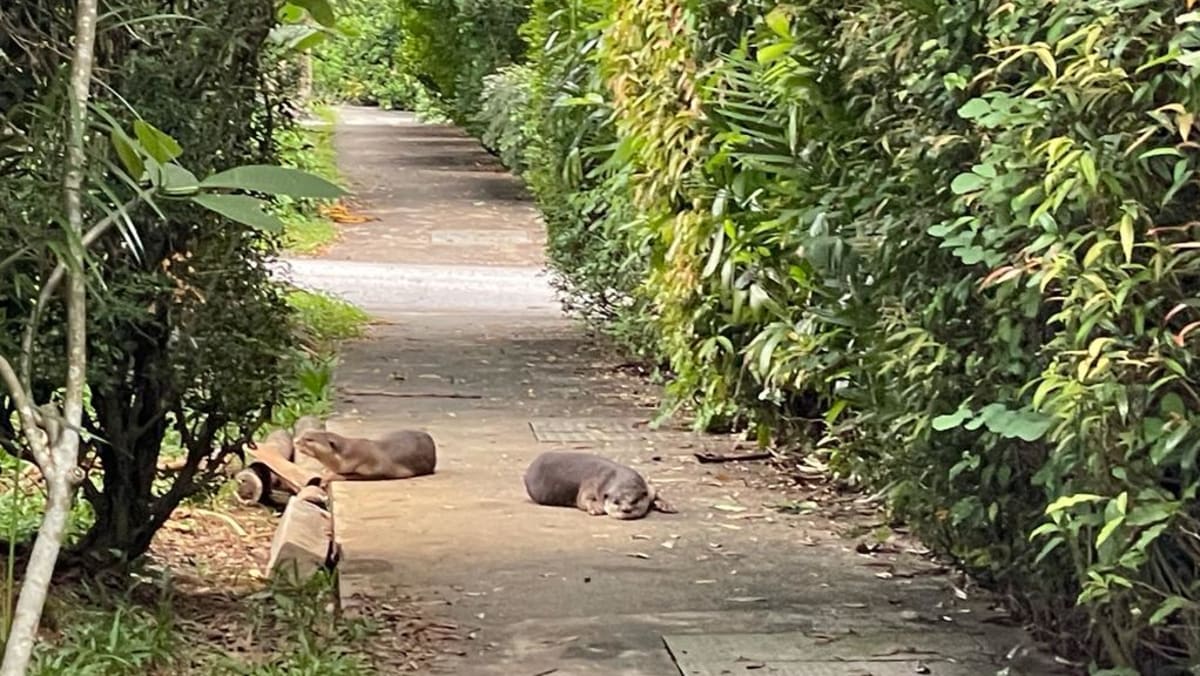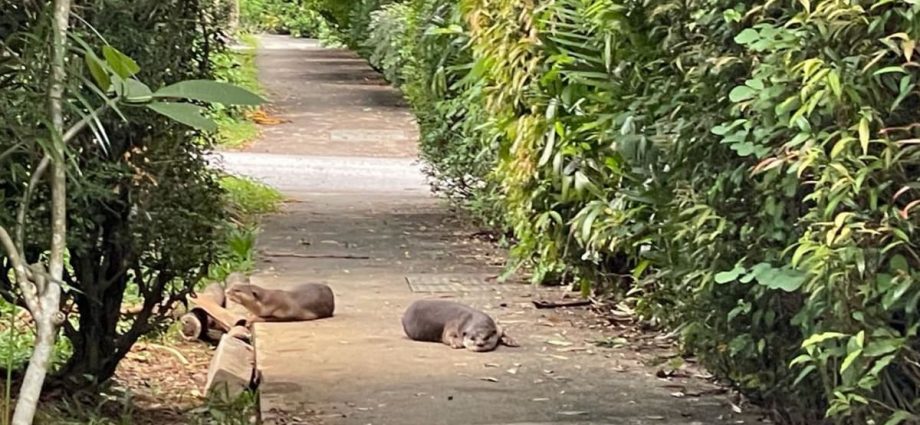
SINGAPORE: The family of otters who were relocated from Seletar had been moved as a last resort due to the location of their burrow and the presence of pups.
Experts who spoke to CNA on Tuesday (Oct 18) said that exclusion measures – setting up barriers that would prevent otters from accessing compounds or fish ponds – remained a priority.
Last week, the family of six smooth-coated otters – three adults and three pups – were moved to an undisclosed area where they could access their natural food sources, the National Parks Board (NParks) said on Monday.
The authorities carried out the operation with other members of the Otter Working Group, which includes the Animal Concerns Research and Education Society (ACRES), Mandai Wildlife Group, National University of Singapore (NUS), OtterCity, and OtterWatch.
This was after media reports earlier this year stated that otters had entered a private home and killed more than 50 fish in a pond.
Mr N Sivasothi, a senior lecturer at the National University of Singapore’s (NUS) Department of Biological Sciences, told CNA that ahead of the transfer operation, NUS students and otter watchers conducted two months of research to get a better context of the situation.
“These otters were likely to have sought refuge within Seletar Hills, after facing competition from more dominant otter families in Sungei Punggol,” said Mr Sivasothi, who also founded OtterWatch, a group that shares news about the mammals.
“Observations revealed they were resident rather than transient, and feeding solely on pet fish in ponds of the estate which is an easily accessible prey for them. The female was observed to be pregnant and the holt they had established was a natal holt.”
Holts are burrows in which the otters rest and sleep.
The need to move the otters, which are listed as critically endangered in Singapore, became apparent in light of their potential conflict with humans.
“Unfortunately the location of the natal holt was underneath a heavily used pedestrian path, bringing otters and people too close to each other,” said Mr Sivasothi.
“With pups, otter parents would become increasingly defensive. The busy road adjacent to the holt would be hazardous to the pups who would explore their environment when they emerged. So this forced the need for mitigation.”
ACRES, which is leading trials to exclude otters from homes in Seletar, concurred.
“The holt was in between a busy road and a busy walkway. As the pups grow older and start emerging, there would be safety issues for the animals and possible conflict issues between people and animals,” ACRES co-chief executive officer Kalai Vanan said.
“The transfer of the otters was a last resort decision, keeping in mind the welfare of the pups.”
He added that transfers in most cases would not be required. Had there not been pups involved in the Seletar case, prevention measures would have sufficed, the experts said, as the otters would have left in search of new food sources.

